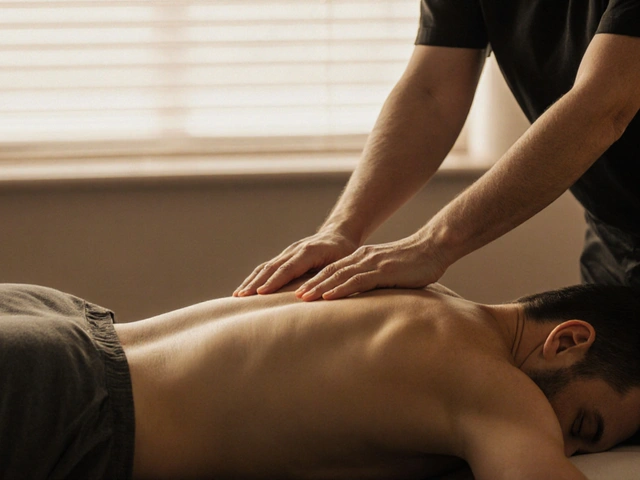Somatic Therapy: Reconnect Your Body to Heal Faster
Trauma and chronic pain often live in the body more than the mind. Somatic therapy uses simple body awareness and movement to unlock stuck patterns that talk therapy misses. It helps people drop tension, sleep better, and move with less pain. Sessions are gentle and practical. You don’t need special flexibility or athletic skill.
A typical session blends breathing, guided awareness, gentle movement, and touch when needed. The therapist watches how your body holds tension and guides tiny changes to release it. That slow, repeated attention rewires nervous system responses so stress becomes easier to handle.
Who benefits?
People with chronic pain, anxiety, PTSD, and long term tension often see real change. Athletes use somatic work to recover faster after injury and improve body awareness.
First visit basics: expect questions about your history, a short movement check, and gentle guidance to notice sensations. You may lie down, sit, or stand. Sessions often end with small home exercises to practice between visits.
Common techniques include pendulation, titration, grounding, and tracking
Try this quick at home move: breathe slowly while scanning your body from toes to head, notice tight spots, and soften them one at a time. Do five minutes daily and note small shifts in posture or sleep.
Sessions usually last forty five to sixty minutes, sometimes longer for intensive work. Weekly visits for several weeks help build new habits, but even a few sessions can bring relief. Costs vary widely; check practitioner listings and ask about sliding scales or packages. Some therapists bill through mental health insurance when somatic work is part of trauma therapy.
You can combine somatic therapy with massage, yoga, or physical therapy for a practical plan. If you get regular massages, tell your therapist about somatic work so they can reinforce what you learn. Many clients notice reduced panic, softer muscles, and clearer sleep after three to six sessions. Lasting change usually comes from steady practice and small daily checks on posture and breath.
Before booking, ask how they handle flashbacks, medical concerns, and consent for touch. A clear plan and regular check ins make the work safer and more effective.
Quick checklist before a session: wear loose clothes, eat lightly, bring notes about symptoms, set a goal like better sleep or less neck pain, and plan two daily breathing checks.

Feldenkrais Training: Unlocking Mindful Body Movement for Lasting Wellness
Discover how Feldenkrais training can transform your mind and body through mindful movement. Explore its science, practical tips, and real-life stories in this comprehensive guide.
Categories
- Health and Wellness (148)
- Alternative Therapies (86)
- Massage Therapy (40)
- Travel and Culture (15)
- Beauty and Skincare (9)
- Holistic Health (8)
- Health and Fitness (5)
- Spirituality (5)
- Other (2)
- Personal Development (2)
Popular Articles



